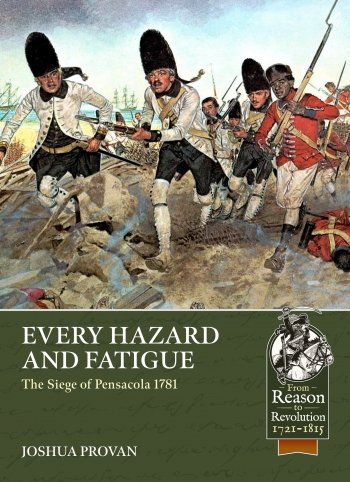-
Załączniki bezpieczeństwa
Załczniki do produktuZałączniki dotyczące bezpieczeństwa produktu zawierają informacje o opakowaniu produktu i mogą dostarczać kluczowych informacji dotyczących bezpieczeństwa konkretnego produktu
-
Informacje o producencie
Informacje o producencieInformacje dotyczące produktu obejmują adres i powiązane dane producenta produktu.HELION
-
Osoba odpowiedzialna w UE
Osoba odpowiedzialna w UEPodmiot gospodarczy z siedzibą w UE zapewniający zgodność produktu z wymaganymi przepisami.
In the final years of the American Revolution the military situation was changing from a dogged stalemate to a crisis which either the British or the Americans could turn to their advantage.
France’s entry as an active participant had highlighted the difficulties of the rebel’s new alliance not its strengths. The successful British defence of Savannah in 1779 drew British eyes southwards and in 1780 Charleston fell and Gates’ southern army was crushed at Camden.
It was a perilous moment for the rebellious colonies. British dominance in the south would give them a strong strategic position from which to prosecute the war. Through this time of uncertainty, however, there were a few rays of hope. A savage partisan war between patriots and loyalists flared up in the south which put strain on British resources.
A ray of hope came from Spain, which had entered the war as a French ally in 1779. From then until 1780, British possessions from the Mississippi and along the Gulf of Mexico suddenly came under threat from the daredevil Governor of Louisiana, Don Bernardo de Galvez. By 1781 Pensacola was the last British held post in West Florida
The siege of Pensacola was the longest conducted in North America during the Revolution. It was in many ways a classic colonial campaign, directed with energy and skilful management of logistics by Galvez’ army. With political opposition in Cuba and amongst the navy, disease, and a hostile environment, Galvez was fighting time as well as the British.
The British garrison in Pensacola was strong, and its commander, Major General John Campbell, was determined to defend his fort. If Galvez’ campaign was typical of those undertaken by the likes of Amherst and Montcalm more than 15 years before, then the siege itself was also a model of eighteenth-century, grit, fieldcraft and chivalry.
It was grim work and both sides underwent every hardship and fatigue as the siege progressed. As Spanish reinforcements were slowly released from Havana, the British depended more and more on the assistance of loyalists and a numerous auxiliary force of Creeks and Choctaws collected by their Indian Agents, to oppose the Spaniards, whose army was made up of the ‘Conditions, Nations and Colours’ of Spain’s American Empire.
The story of the siege of Pensacola, and the Spanish and Spanish-American part in the Revolutionary War, represents a different side to the struggle, far removed from Redcoats and Patriots, it is also a story of great drama, colour and sacrifice that helped shape the character of the United States.








